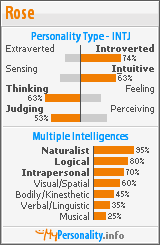She was adopted from Hinduism in the 6th Century which explains many similarities she has between the two religions. Tara is a set of aspects of the same quality within Buddhism and is commonly found in Tibet and Japan but less so in China. She is still very popular in Tibet and Mongolia. There are stories of her assisting escaping Tibetans.
One story of Tara tells how she reached a high level of spiritual attainment and was advised that she should ask to come back as a man on the next turn of the wheel so she might progress further. She was incensed and declared she would only incarnate as a woman and when she does transcend she will be a woman. She was also saddened by the lack of those working for the enlightenment of women.
Even the Dalai Lama has spoken of a true feminist movement within Tibet, led by the followers of Tara.
She is the Mother of Liberation. She is compassion and action. She is a saviour who hears the cries of those in misery. She is playful and manifests in the lives of those who are too serious or those who denigrate the feminine.
She has a number of aspects which are more common but there are sects which recognise 21 Taras but there is another Tara known as the 22nd Tara. These aspects are approached in practices by yogis so that they can gain those aspects within themselves.
Green Tara
The buddha of enlightened activity she protects us from fear and anxiety. She can grant wishes and brings happiness. She can save us from eight specific disasters: lions and pride; wild elephants and delusions; forest fires and hatred; snakes and envy; robbers and fanatical views; prisons and avarice; floods and lust and demons and doubt.
White Tara
Known for compassion, long life, healing and serenity, she counteracts ill health. She is the embodiment of the emotion behind compassion and shines as bright as the moon.
Red Tara
More fierce but associated with magnetizing all good things. She is discriminating awareness and shows us how to turn raw desire into love and compassion.
Black Tara
Associated with power
Yellow Tara
Associated with wealth and prosperity
Blue Tara
Associated with the transmutation of anger, her ferocious, wrathful female energy she destroys obstacles and brings good luck and swift spiritual progress.
Cittamani Tara
A green Tara found in the Gelug School of Tibetan Buddhism
Kadiravani Tara
Tara of the Teak forest.
To be honest, the information I was able to find on the web made finding out much factual information quite difficult. It wasn't easy to separate things out in a way that made sense to me. These Eastern religions use words and concepts that are not familiar to me. I think I would need to do a fair bit of reading about the religions themselves as well as about Tara herself (herselves?) to be able to piece together it all. And it would need to be from books rather than the web. On this subject the web skims and gets lost inbetween the Taras a little. I hope the things I have written are correct!
The New Cottagesmallholder HQ
1 year ago







lovin these posts rose... tara & history! i've a fascination for tara myself... eastern & irish... is there a connection to ishtar... reckon there is. Thanks for the info... enjoy your digging around!
ReplyDeleteNo idea about Ishtar. I shall see what I can find. One tricky thing about this sort of thing on the internet is that it is really hard to tell what is truly fact and what is someone's guess. For instance is Terra really linked to Tara? And Tar and all the others....
ReplyDeletethe fact(?) that she has been found in caves and dated as so very, very ancient makes me wonder if she might have been one of the very, very first. I guess we shall never know for sure.
The more I read though, the more I understand why her broken shield appeared in my dream. I think I have a little more exploration to do yet though....
only look up ishtar if you want.... i already have... just thought the name might have migrated somehow!
ReplyDelete